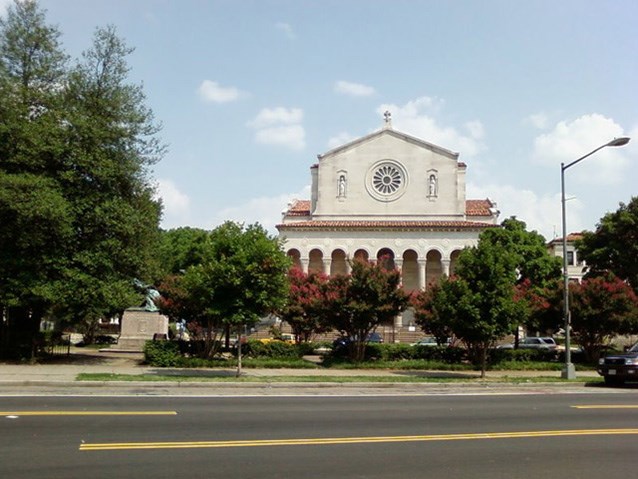Last updated: October 14, 2021
Article
Gibbons Memorial Cultural Landscape

NPS (2007)

NPS (2007)
The period of significance begins with the extension and improvement of 16th Street past Florida Avenue in 1903 and ends with the installation of a memorial to Cardinal James Gibbons in 1932. The reservation is located across from the Shrine of the Sacred Heart. The most prominent feature of Reservation 309 G, a statue of Cardinal James Gibbons, Archbishop of the diocese of Baltimore, was erected in 1932. Reflective of naturalism, the memorial is a rare example in Washington, DC of a portrait statue of a leader of a religious community.
The 1918 landscape design by landscape architect John H. Small, Jr. predates the memorial. The cultural landscape, despite some changes to plant material, reflects the community desire for the public use of the reservation and contributes to the property’s significance. Mount Pleasant residents themselves wanted to ensure that some triangular reservations would become public parks ideal for statuary and memorials.

NPS (2007)
The property’s historic circulation is remarkably intact. The Gibbons Memorial, U.S. Reservation 309 G still retains many features of its 1918-1932 design. It is subject to heavy pedestrian use, particularly from commuters passing through daily on their way to and from work, local residents and workers, and homeless individuals.
Quick Facts
- Cultural Landscape Type: Designed
- National Register Significance Level: State
- National Register Significance Criteria: C
- Period of Significance: 1903-1932
